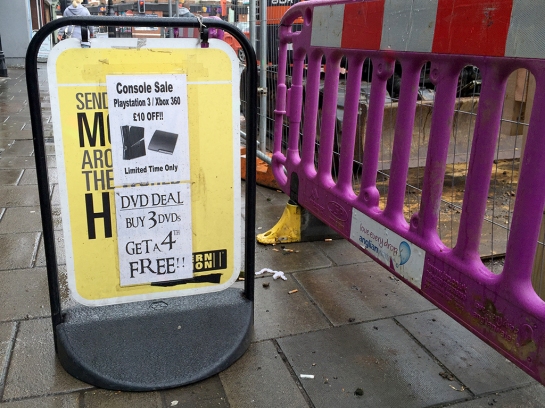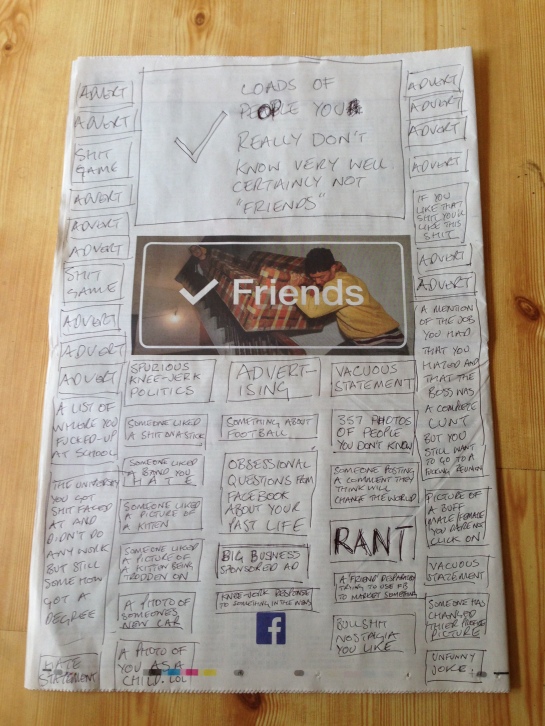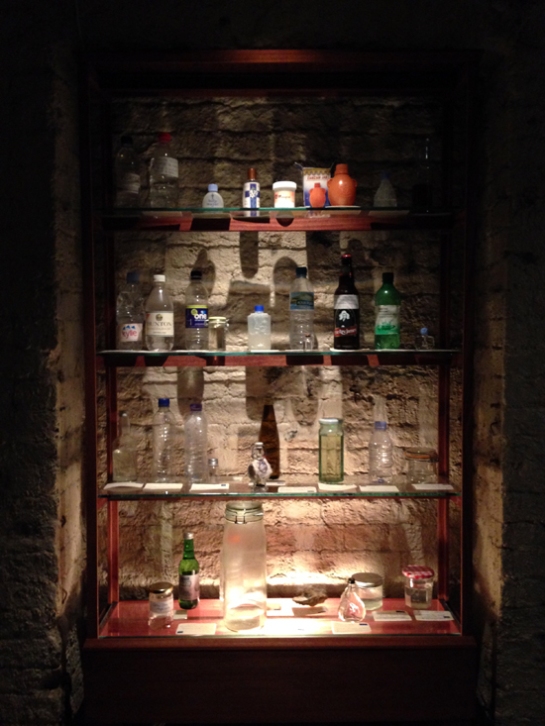
The blogging on here is truly taking a back seat as I thought it would *, but my Graphic Interruptions project continues. I got validation this week about its direction in the form of results for the first piece of assessed work on my Masters course, and I’m stumbling across more examples every time I step out onto a pavement.
The above example is one of my recent favourites. The reason I like it is because the graphics aren’t decayed by weather and its form isn’t physically broken. This is the case with a lot of examples I find which could lead to an accusation the project is solely concerned with ‘ruin-porn’, which it isn’t. This piece of graphic design is interrupted because of human interaction as someone has decided, (without too much thought), that health & safety concerns trump communication. This ultimately renders the intention of this item useless when approached from this direction. The question then needs to be asked about the suitability of such a communication device, in the form of pavement signage, if it is liable to have people tripping over it? I also like the irony this implies: the item becomes a lottery—will you or won’t you trip over it?—and I wonder whether there is more chance of financial gain if you were to trip over this and put in a ‘no win no fee’ claim than actually buying a lottery ticket.
Until now I’ve been using Tumblr as an image dump for my finds. However, I’m not convinced I was getting the traffic I wanted and I find Tumblr a little clunky. Now that Instagram have made switching between multiple accounts easy, I’ve created one for this project: you can find it at @graphic_interruptions
Lastly, for now—the undergraduate graphic design course I lecture on at UCS is taking students to New York at the end of this month. Exciting as it is to visit New York, I’m doubly excited to have the opportunity to make this project international.

* It is typical that when I am extremely busy, (as seems to constantly be the case now), an idea for a blog post will throw itself at me that can’t be ignored, as happened recently with the article I wrote for Eye. See previous post.




















